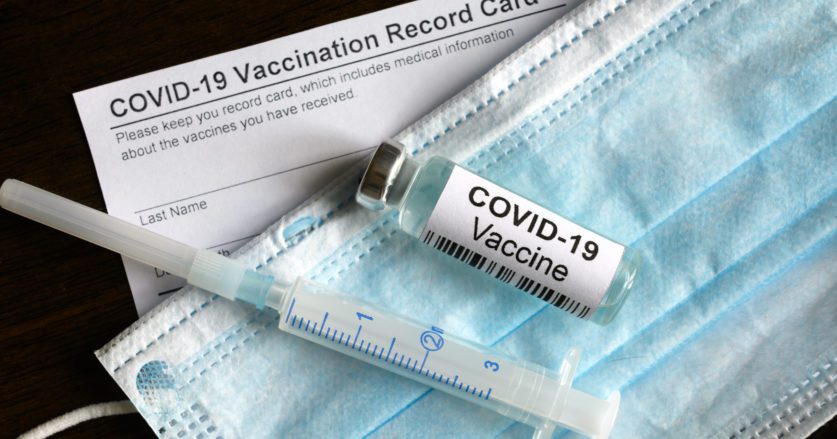Call Us Now1-800-414-2174


From the Law Office of: Thompson Hine LLP – Nancy M. Barnes, M. Scott Young, Sara Hamilton and Hannah Caldwell
The CDC stated on May 13, 2021, and subsequently updated on May 16, 2021, that fully vaccinated individuals can resume pre-pandemic activities without wearing a mask or socially distancing. They should still get tested and may need to quarantine if they experience COVID-19 symptoms. Individuals are considered fully vaccinated two weeks after their final dose. For Pfizer and Moderna recipients, that means two weeks after receiving the second dose, and for Johnson & Johnson’s Janssen recipients, it means two weeks after receiving the single-dose vaccine.
On April 27, 2021, the CDC stated that in most cases, fully vaccinated, asymptomatic individuals need not quarantine after suspected or confirmed COVID-19 exposure but advised that they should still self-monitor for 14 days. The CDC also said that fully vaccinated individuals could be exempt from routine screening programs.
These updates may permit employers to revise and update their workplace policies accordingly. The new CDC guidance does not override other federal, state or local rules and regulations The CDC guidance is not the complete picture for employers, however, since it applies “except” where other rules or regulations apply, including other federal laws. Numerous states and localities still have emergency proclamations, public health orders, executive orders or other laws currently in place.
In Ohio, Governor DeWine announced on May 14, 2021 that the mask mandate would be lifted for fully vaccinated individuals where the corresponding order was issued on May 17. The mask mandate ends for all individuals (regardless of vaccination status) on June 2, 2021. In accordance with CDC guidance, on April 27, 2021, the Ohio Department of Health also amended its previous guidance to state that in most cases, fully vaccinated individuals need not quarantine after exposure if they are otherwise asymptomatic.
On May 17, 2021, New York Governor Cuomo adopted the CDC guidance effective May 19, 2021, including certain quarantine exceptions for fully vaccinated individuals.
On April 30, 2021, Georgia Governor Kemp revised the state’s guidance for employers through May 30, 2021. While the guidance states that most employers must still “implement measures which mitigate the exposure and spread of COVID-19 among its workforce,” it leaves open how to do that. Georgia did not previously have a mask mandate in place.
OSHA’s general duty clause, regulations and agency guidance still apply. Employers should be mindful of whether OSHA, which enforces legal regulations and statutes as they apply to safety and health in employment, has fully adopted the CDC guidance and/or is in line with any applicable state or local orders governing health and safety relating to COVID-19. OSHA’s general duty clause, a federal statute, requires employers to provide a work environment “free from recognized hazards that are causing or are likely to cause death or serious physical harm.” There are also industry-specific, federal code provisions requiring workplace hazard assessments and appropriate workplace protection for employees.
On May 17, 2021, OSHA’s website stated the agency’s intent to update its guidance, given the CDC’s updated guidance for vaccinated individuals, to be consistent with the CDC’s position. In April 2021, OSHA, through its federal and state-run programs responsible for enforcing its federal safety and health regulations, received over 260,000 complaints involving alleged unsafe workplaces based upon alleged COVID-19 exposures, and opened approximately 40,000 workplace inspections. Employers should be cautioned that their duties under OSHA apply separately from and in addition to local or state orders and any guidance from the CDC. OSHA also requires that employers with mandatory vaccine policies record adverse actions to a vaccination by an employee in their OSHA logs to the extent the adverse reaction results in death, days away from work, restricted work or transfer to another job, medical treatment beyond first aid, or loss of consciousness. All covered employers must continue making reasonable efforts to determine whether COVID-19 cases are work-related, consistent with the agency’s May 2020 guidance. However, fully vaccinated individuals need not quarantine after confirmed or suspected exposure at work.
Employers should also be wary of any industry-specific exceptions. For instance, even under the updated guidance, some health care facilities, correctional institutions and shelters should generally still require asymptomatic employees who are fully vaccinated to test for COVID-19 and quarantine after potential or actual exposure to the coronavirus.
Finally, the CDC’s guidance could affect an employer’s administration of its leave policies and benefits. Under FFCRA, for instance, an employee may be eligible for up to 10 days of paid sick leave through September 30, 2021 if they are under a federal, state or local quarantine order. Compliance with FFCRA leave is now voluntary for applicable employers. The 10 days of eligibility reset as of April 1, 2021, meaning that eligible employees can use up to 10 days for qualifying reasons even if they already used 10 days prior to April 1, 2021. As the quarantine guidance is relaxed for fully vaccinated individuals, they may no longer qualify for FFCRA pay, unemployment compensation or other leave entitlement under a company-specific policy.
Employers should also check state or local laws, as applicable. In New Jersey, for example, employees must be permitted to use earned sick leave if they are quarantining due to suspected COVID-19 exposure. An employee’s eligibility and an employer’s corresponding obligation to allow the sick leave use will change as the guidance continues to evolve.
In summary, employers should carefully evaluate their current legal landscape before ditching the face masks or easing social distancing requirements.
The landscape is changing very quickly and the legal requirements in effect can still vary significantly by state, locality, industry, size and other factors.
WorkSaver Employee Testing Systems 478 Corporate Dr. Houma, LA 70360
![]()